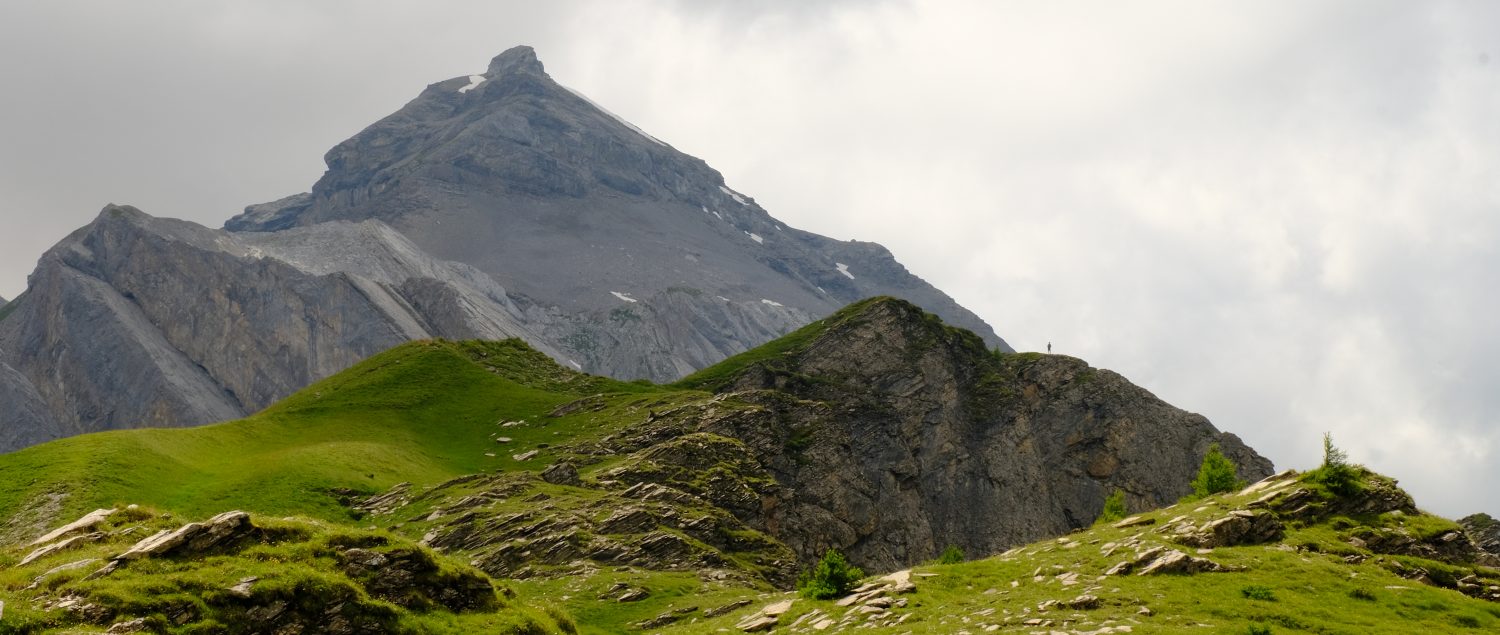The big butterfly count is now on! https://bigbutterflycount.butterfly-conservation.org/ Everyone can join in. Here’s what I found in the fields between Pury End and Sholebrook Lodge, near Whittlebury on Tuesday afternoon and Wednesday morning this week.
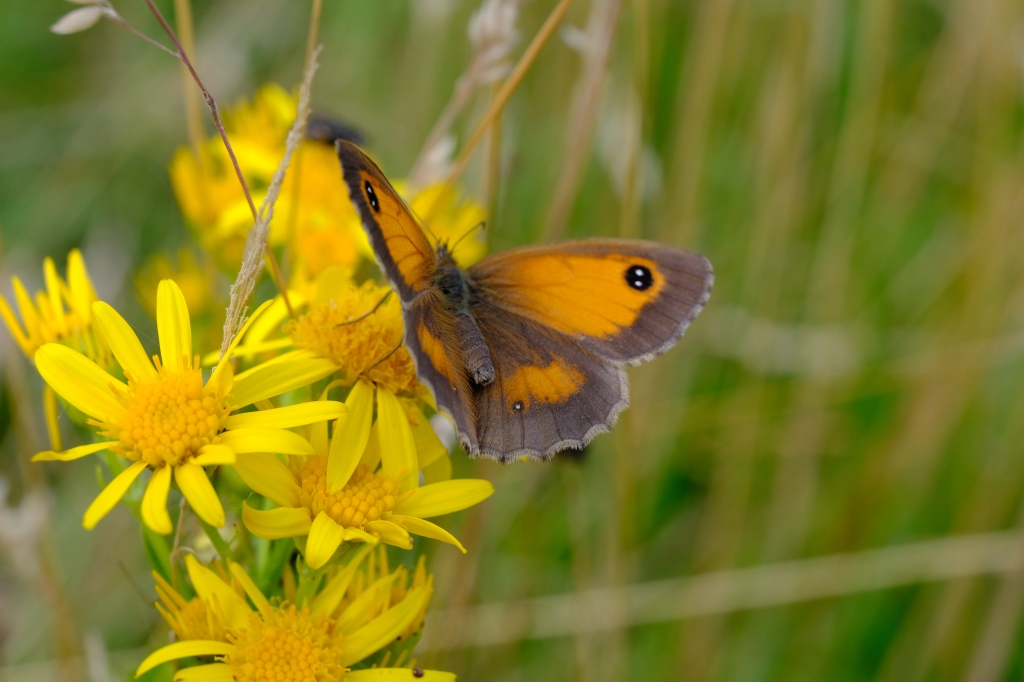
Photo Credit: Sally Woodbridge
I saw loads of these little copper butterflies whizzing alongside the hedgerows and nectaring on the little clumps of ragwort (pictured) or bramble flowers.
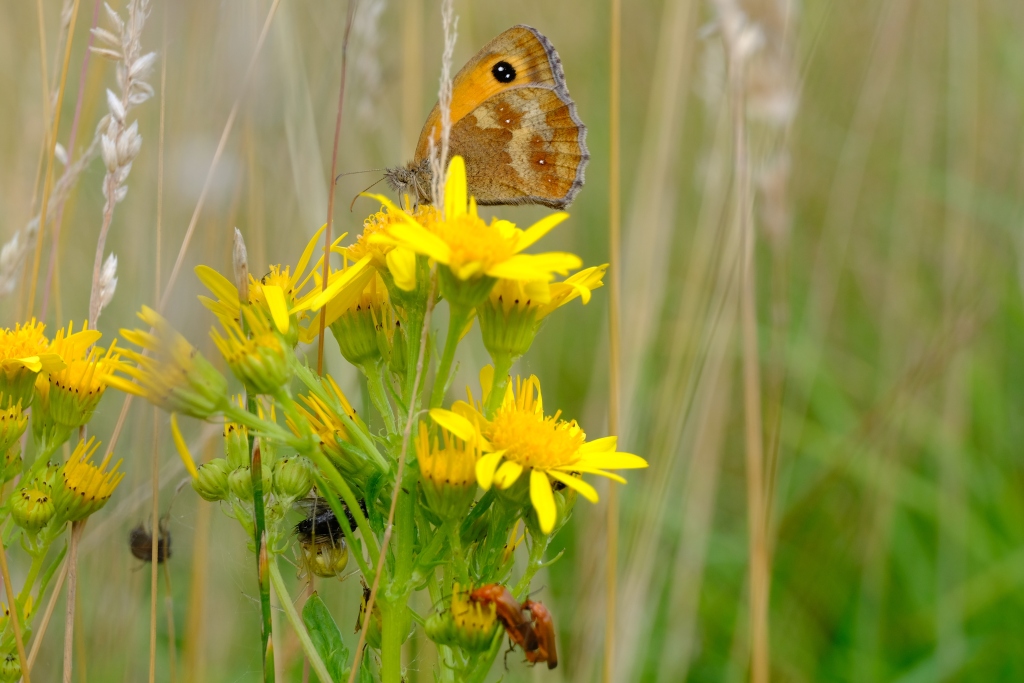
Photo Credit: Sally Woodbridge
Gatekeepers look less coppery with their wings closed. Don’t mix up this zippy little butterfly with the larger, slightly flappier Meadow Brown below.
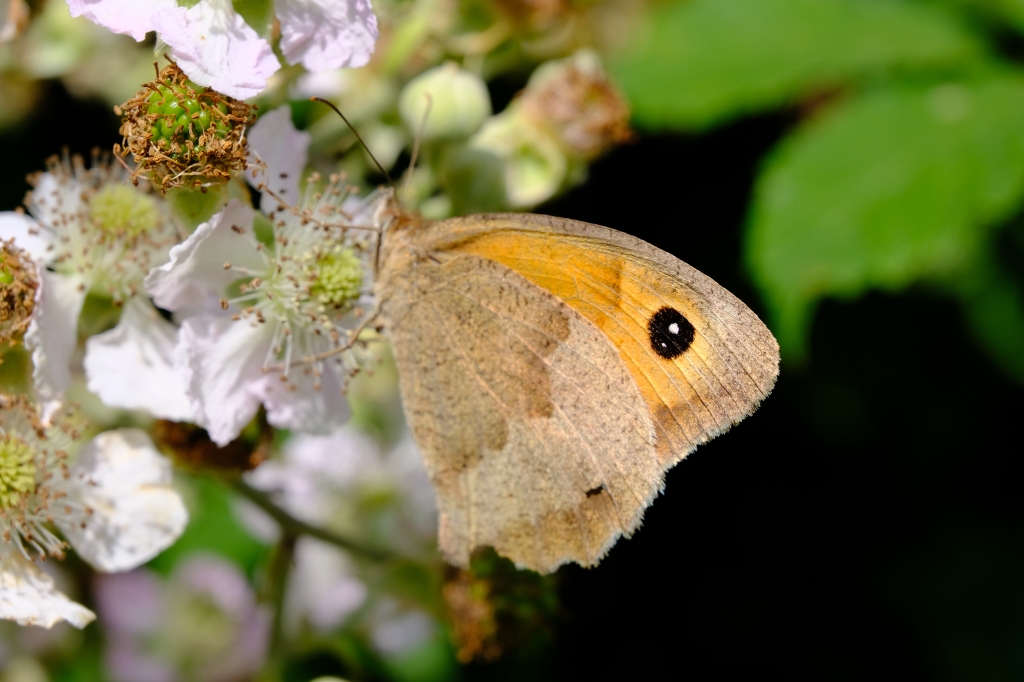
Photo Credit: Sally Woodbridge
The larger Meadow Brown can be distinguished from the Gatekeeper as its upperwings are brown rather than copper. Also the underside of its rear hindwings are very plain, contrasting with the pattern on the Gatekeeper.
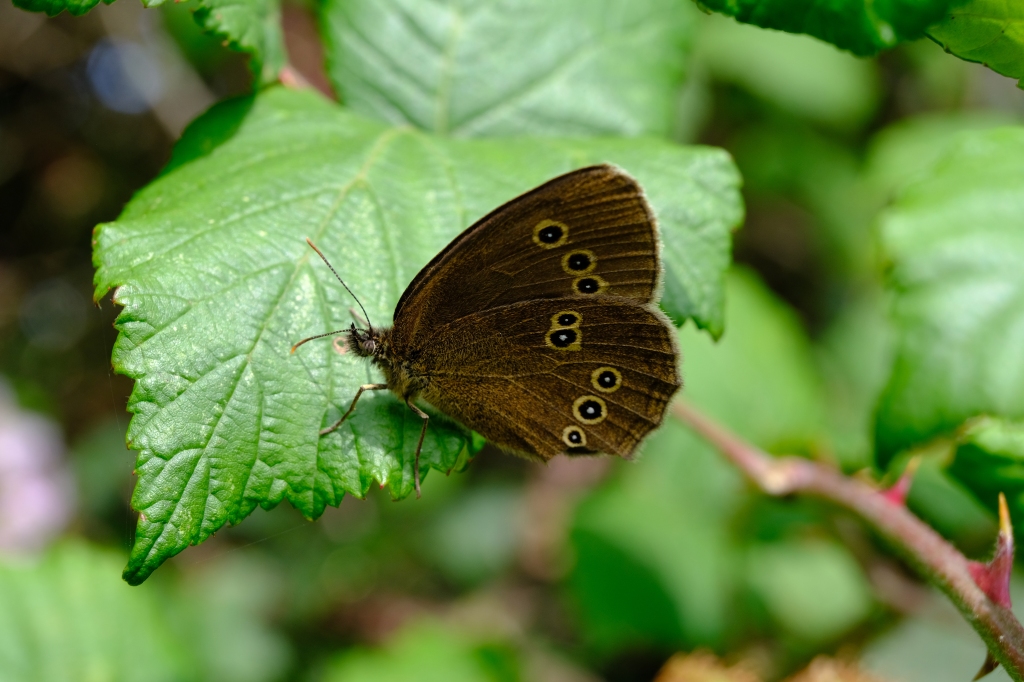
Photo Credit: Sally Woodbridge
The dark brown Ringlet above has a neat series of dots on its underwing. This is echoed equally neatly on its upperwing. It could be confused with the dark brown but more flamboyantly decorated Speckled Wood below.
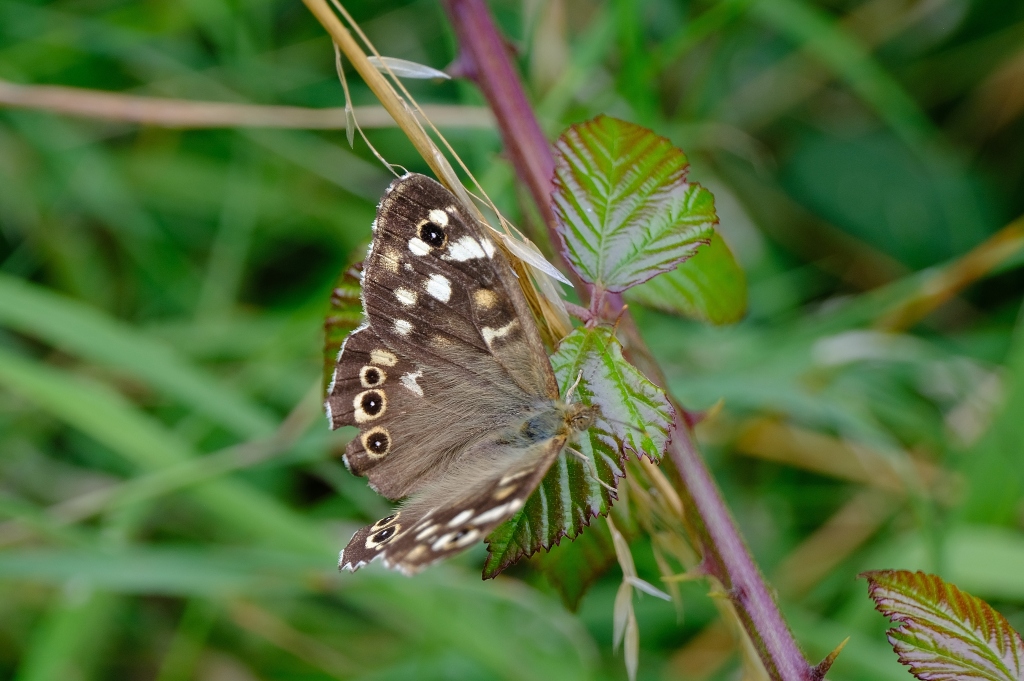
Photo Credit: Sally Woodbridge
The upperwing of the Specked Wood has lots of dots and speckles. Its underwing is also very patterned but with blocks of different browns, buffs and greys as well as dots, much fancier than the Ringlet.
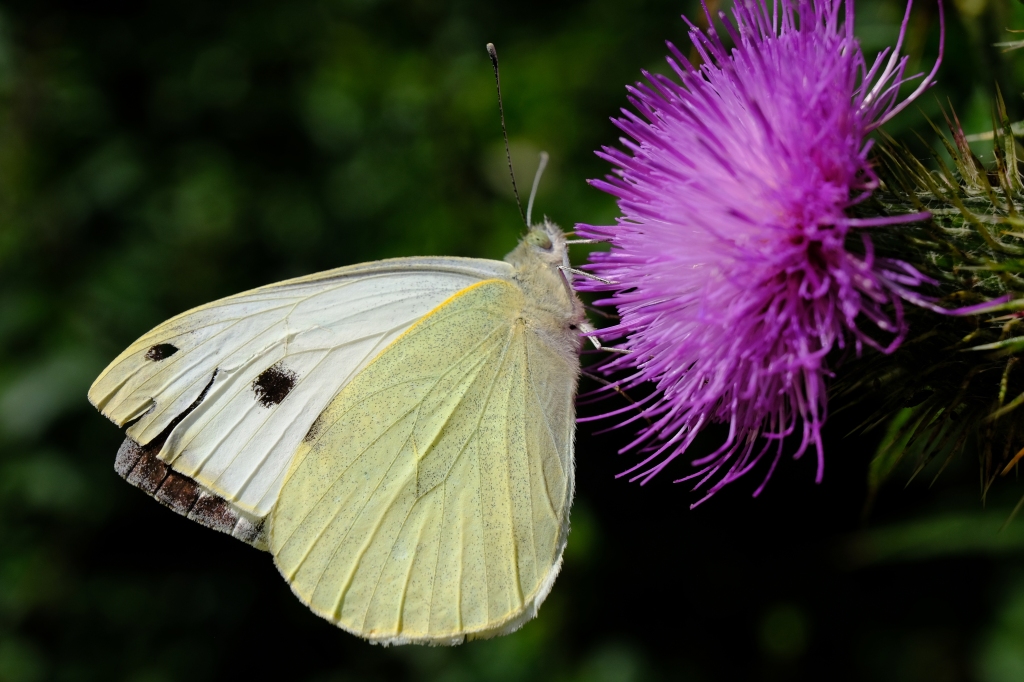
Photo Credit: Sally Woodbridge
We all know the gardener’s nemesis the Large White (above). The female Large Whites have two spots on the forewings (best seen when the wings are open), the males have none. It can be easy to mix this one up with the Green-veined White below as they do fly together.
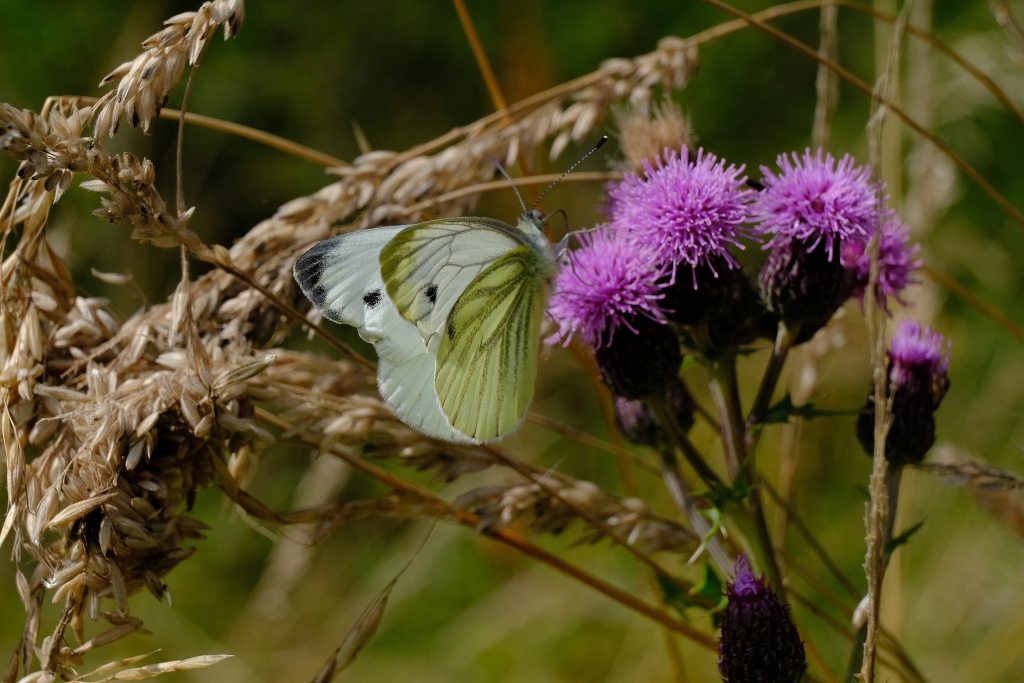
Photo Credit: Sally Woodbridge
The give away is in the name. Look at the underwings of the Green-veined White above, the markings around the veins on the lower hindwings are quite distinctive as opposed to the more uniform pale cream / yellow on the Large White. Interestingly the males in summer brood of the Green-veined White can have black spots on their forewings.
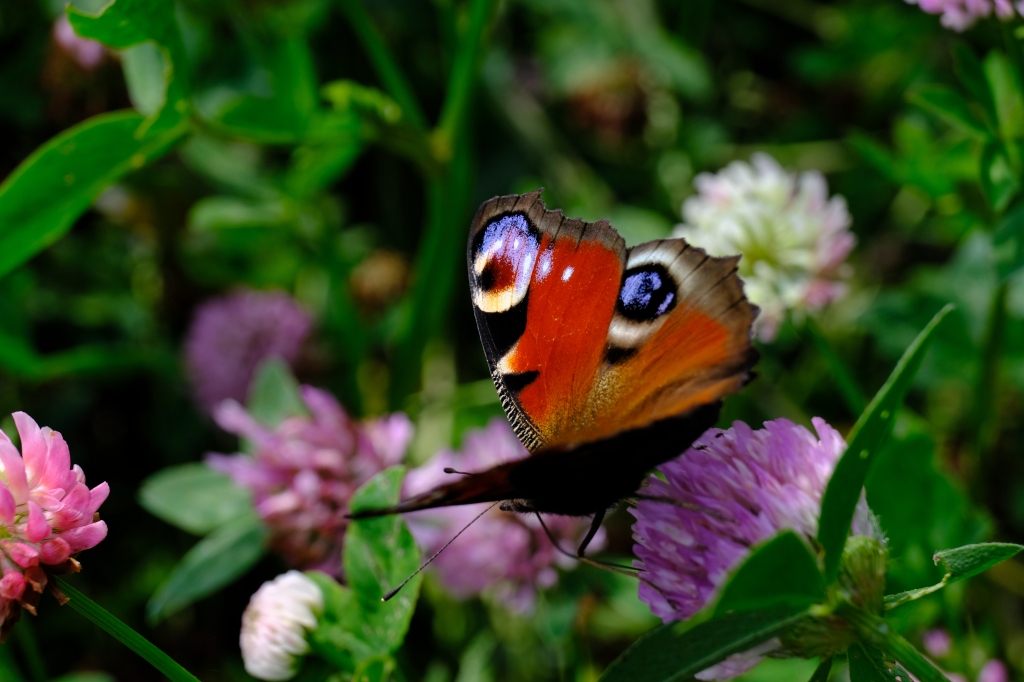
Photo Credit: Sally Woodbridge
The Peacock is such a dazzling butterfly. It seems so large and powerful next to some others, and definitely gave me the run around when I was trying to photograph it.
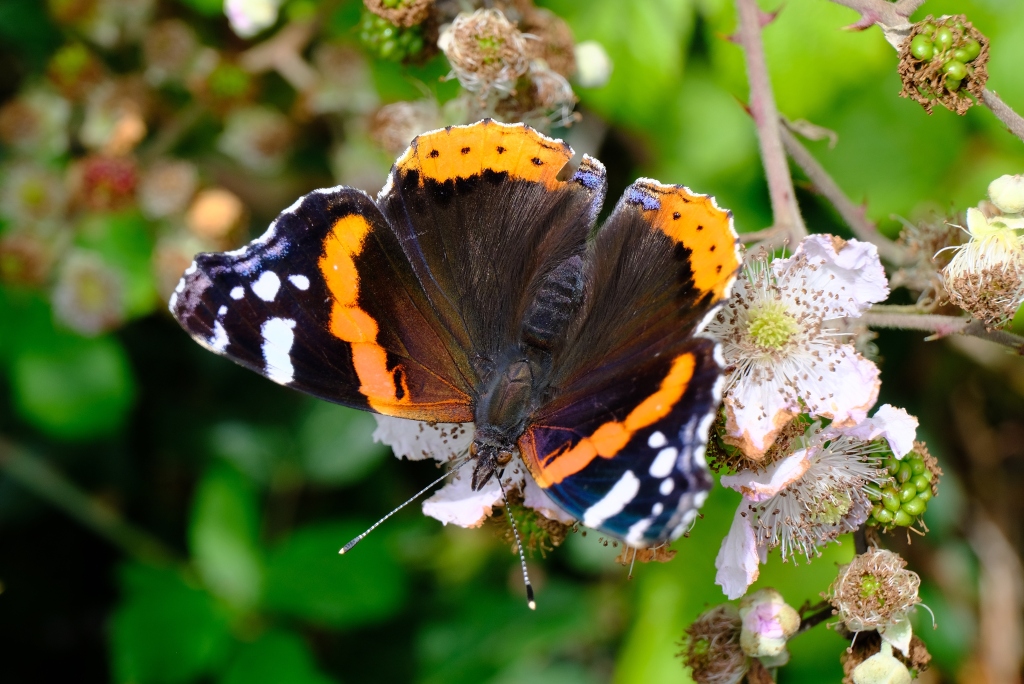
Photo Credit: Sally Woodbridge
The Red Admiral is a similar size and another powerful flyer. It looks a bit more orangey in this photo, the stripes on its forewings are redder in real life. This year lots of the adult butterflies migrated over here in May, so this may be one of their offspring.
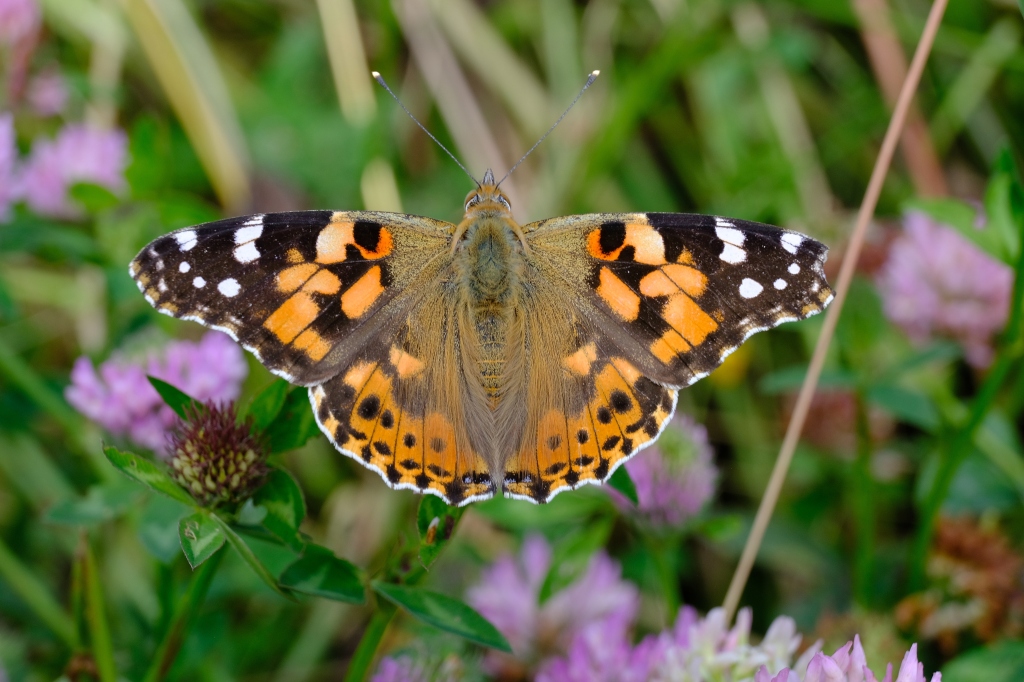
Photo Credit: Sally Woodbridge
The Painted Lady is another long distance migrant and numbers can vary greatly from year to year.
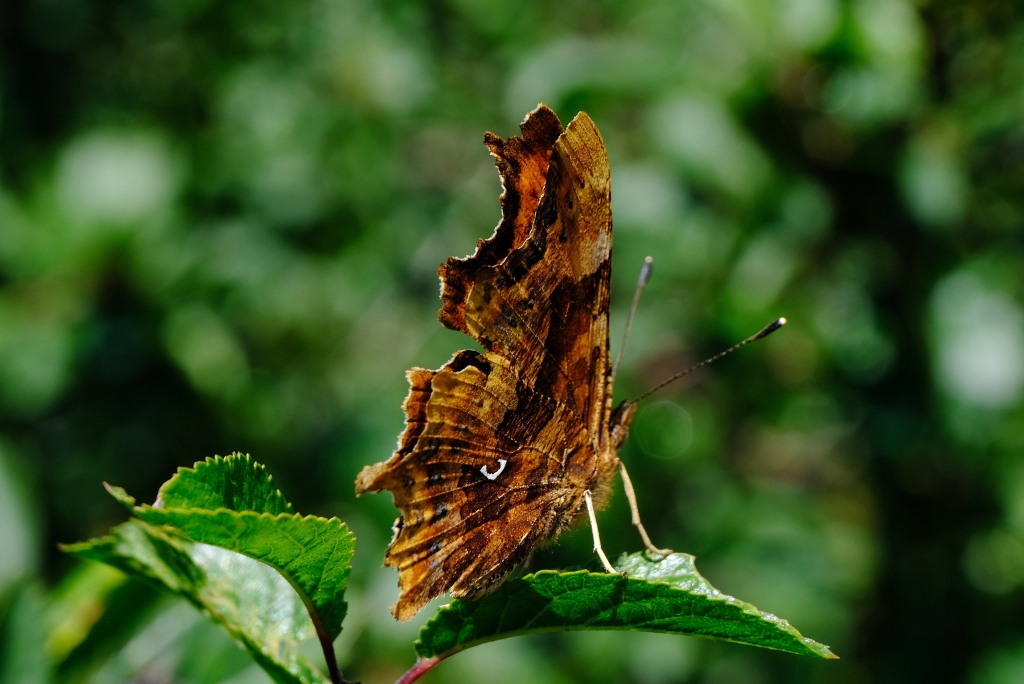
Photo Credit: Sally Woodbridge
Another larger butterfly. The Comma’s crazy shaped and patterned wings are designed as camouflage for when it hibernates in dead leaves.
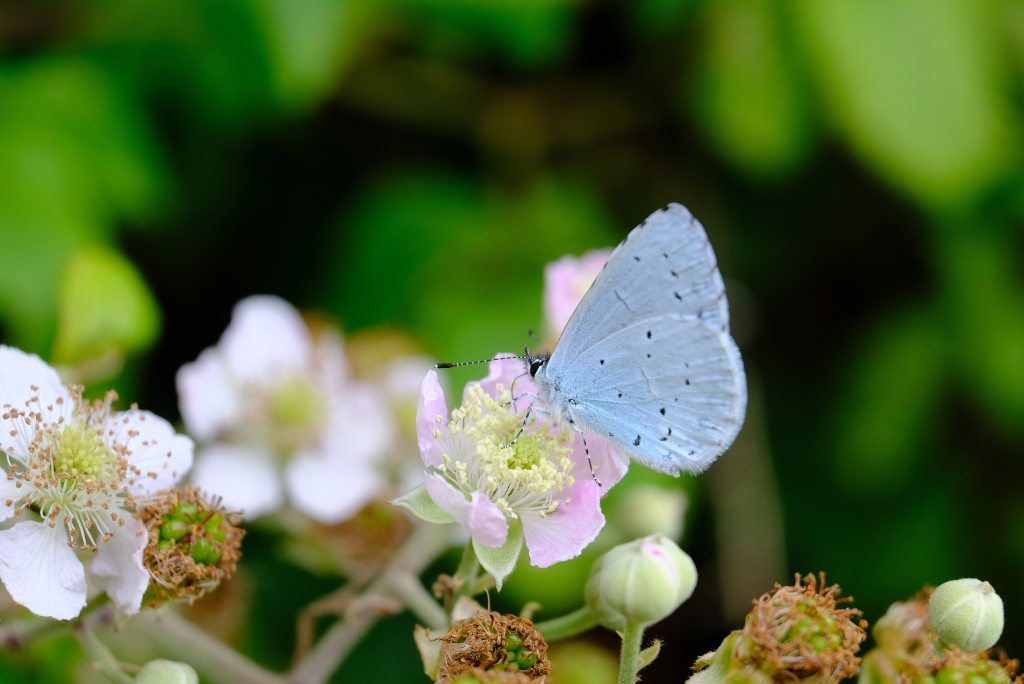
Photo Credit: Sally Woodbridge
Back to the little butterflies! I just love the baby blue of the Holly Blue against the pale pink of the bramble flower. The south facing bramble patch I found was alive with these, plus bees and a whole load of insects I couldn’t begin to name.
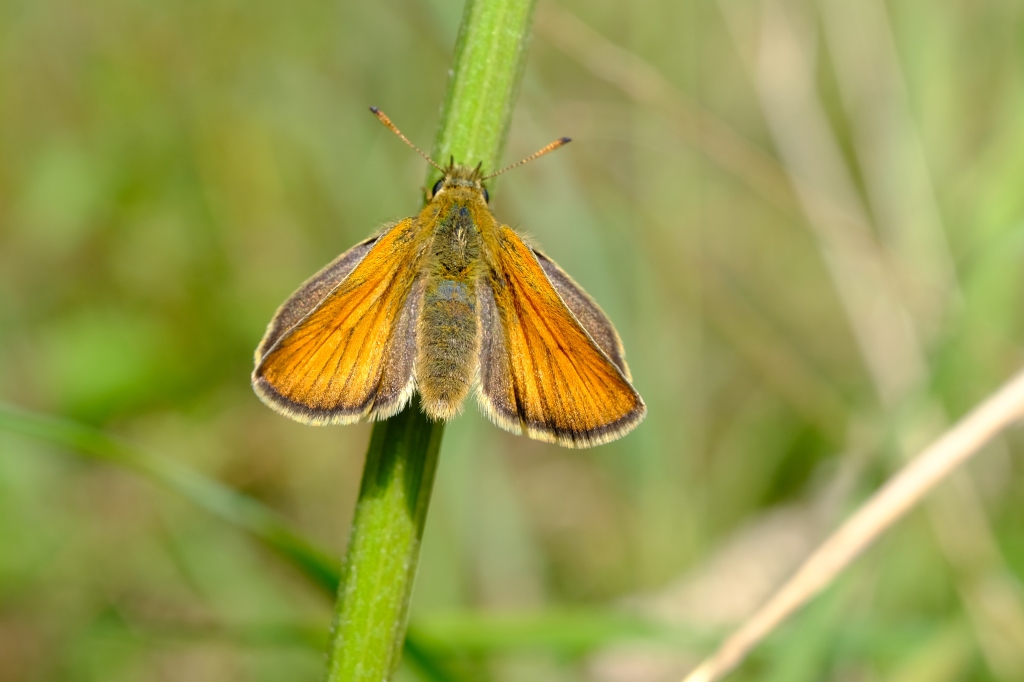
Photo Credit: Sally Woodbridge
I have a real soft spot for skippers, they are such feisty little butterflies. I found this one low in the grass between young trees and a tall hedge and it totally ignored me.
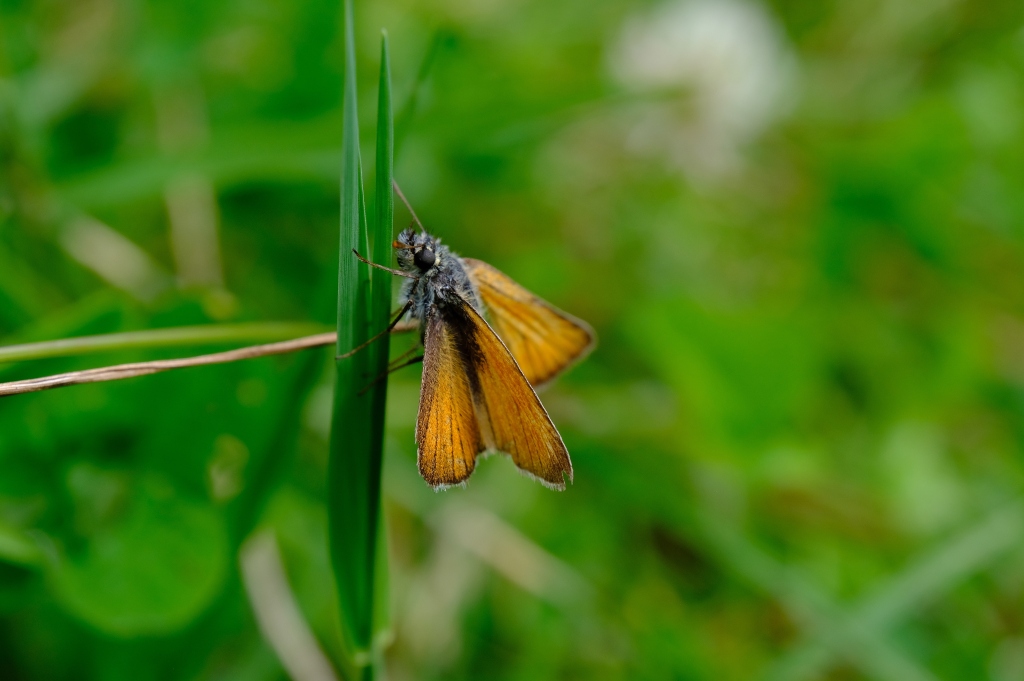
Photo Credit: Sally Woodbridge
Here’s a photo from the side to see its forewings at an angle to its hindwings, a characteristic shape when it perches. Enjoy your butterfly spotting!
- Bebbington, J. and Lewington, R. (2018) Guide to the butterflies of Britain and Ireland. Field Studies Council, OP184.
- Butterfly Conservation: https://butterfly-conservation.org/
If you enjoyed this please enter your email address below to follow this blog and receive notifications of new posts by email.

